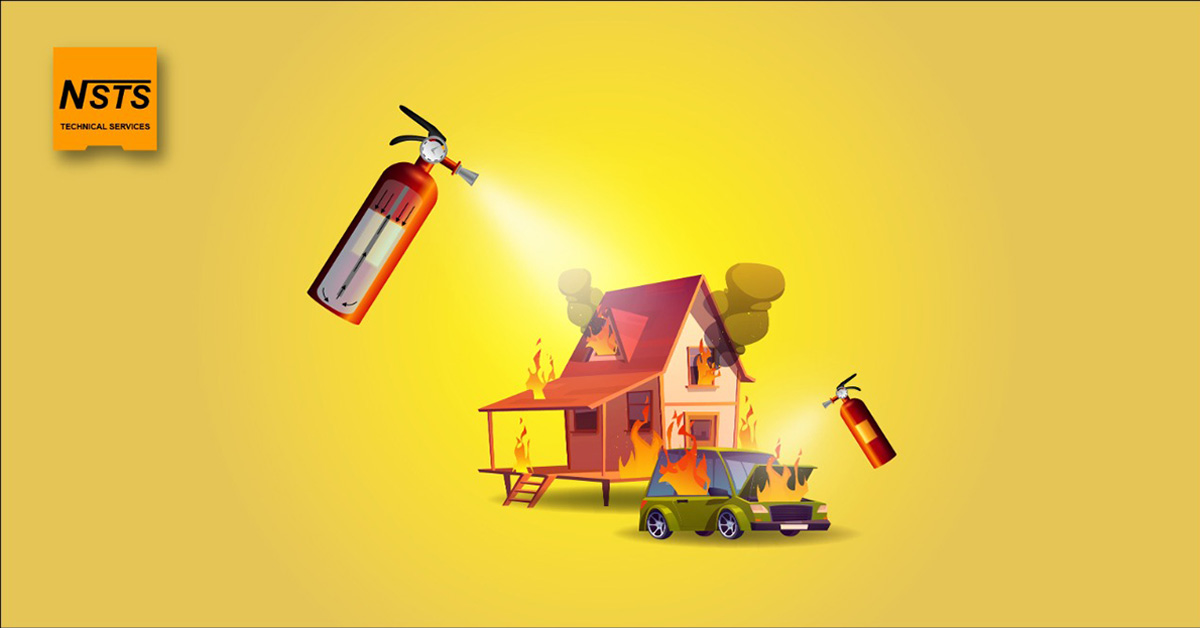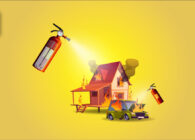
Types of Fire Extinguishers and Safety Tip
You know you need a fire extinguisher in your office or industrial facility, but how do you tell which one you need when it comes to utilizing one or purchasing a new one? There’s a lot that goes into properly protecting your building from fire, and it’s critical to select the fire extinguisher that will protect you and the others on your property safely. It’s beneficial to be aware of the various types of fire extinguishers available.
Fire Extinguishers: What They Are and How to Use Them
Various sorts of fire extinguishers are used to knock off various types of fires. While having a universal extinguisher would be ideal, the challenge is that specific varieties of fires necessitate different forms of inhibition. While water will put out a typical bonfire, it will exacerbate other fires, such as electrical fires. As a result, there are distinct varieties of fire extinguishers available in the market that correspond to a distinct fire class. Let’s look at the myriad categories of fire extinguishers and the types of fires that they can put out.
Class A Fire Extinguishers
Common combustible flames, such as those fueled by paper or wood, are safe to put out with Class A fire extinguishers. There are several safe ways to put out a Class A fire, therefore you’ll find a lot of Class A fire extinguisher options. To crush and quench a Class A fire, some may employ a cleaning agent, whereas others utilize water mist.
Class B Fire Extinguishers
Class B fire extinguishers are for putting out flames in combustible liquids like oil, grease, and gasoline, and they often employ C02 or clean agents to do it. Both clean solvents and CO2 act to weaken and finally extinguish a fire by removing oxygen. Class B fire extinguishers with clean agents are also a good choice as they create no residues and don’t require any cleaning.
Class C Fire Extinguishers
Electrically powered fires are safe to put out with Class C fire extinguishers. Most class C fire extinguishers suffocate the fire with CO2 or similar non-conductive chemicals rather than introducing conductive elements to the flames.
Class D Fire Extinguishers
Combustible metals such as magnesium and titanium are extinguished with Class D fire extinguishers. Extinguishing agents that do not react with the burning metal will be needed to put off these types of fires. A dry powder ingredient is used in most Class D fire extinguishers to smother the flames and absorb heat, thereby controlling the fire.
Class K Fire Extinguishers
Kitchen fire extinguishers are designated as Class K. These fire extinguishers are typically used on cooking fat, grease, and oil fires, and they use a wet chemical agent made of potassium to cool and control the flames at the same time.
What additional kinds of fire extinguishers are there?
There are various types of fire extinguishers available, as well as multipurpose fire extinguishers. Multipurpose fire extinguishers come in a variety of classes and are rated for different types of flames.
You can immediately discover what fire a multifunctional fire extinguisher is good for by looking at the label. An ABC fire extinguisher, for example, is safe to use on fires of classes A, B, and C, whereas an AB fire extinguisher is only for classes A and B.
Safety Instructions for Fire Extinguishers
All fires have the potential to be extremely deadly and life-threatening. When attempting to put out a fire, your safety should always come first. It’s critical to pick the right extinguisher for the kinds of fires you’re expecting. There are multi-purpose extinguishers in the market with an ABC rating. These are useful for a variety of purposes, but extinguishers with an ABC rating can damage laptops and other digital equipment. Electrical fires should never be put out with water extinguishers. It’s best to do some study on the types of extinguishers you’ll need for the environment you’ll be using them in. To learn more, contact the HVAC designing contractors Dubai at Nathan Stars.
When to Use an Extinguisher
When using a portable fire extinguisher, keep the following in mind:
- The fire is within a tiny area, such as a trash can.
- The fire isn’t spreading.
- The entire building has been evacuated.
- The emergency services have been dispatched or are about to be dispatched.
- There is no smoke in the room.
Operating a Fire Extinguisher
Remember the word PASS when using a fire extinguisher:
- P- PULL the pin between the extinguisher handles.
- A – AIM the nozzle at the fire’s origin. You should keep a distance of 6-10 feet from the flames.
- S – Squeeze the fire extinguisher’s handle
- S – Sweep the nozzle from the side – to – side across the fire’s base
If you’re going to fight a fire, make sure the following:
- You have proper knowledge of how to use a fire extinguisher.
- In case you can’t put out the fire, you have a clear escape route.
- You know what’s on fire, and you’ve got the correct extinguisher for it.
- It’s a tiny fire.
What should you look for while choosing a fire extinguisher?
When it comes to choosing the correct fire extinguisher for your building, it all boils down to accurately assessing the threats that exist. It’s important to keep in mind that you might require more than one fire extinguisher, or that you might choose to go with a multipurpose extinguisher.
Consider the case of an industrial office complex. To protect against conventional combustible fires, the office area may just require a Class A fire extinguisher. If you’ve got a lot of gadgets or a computer laboratory that could overheat, you might additionally need a Class C fire extinguisher. You should select-fire extinguishers that best fit the fire threats in your workplace or facility, which may necessitate purchasing multiple fire extinguishers or a variety of multipurpose fire extinguishers.
It’s always a good idea to consult an expert if you’re not sure what fire extinguishers you have or need. Every business has its own set of rules and needs; whereas your office building may only require a few ABC fire extinguishers, a restaurant will demand more sophisticated fire protection.
For answers to your fire extinguisher questions, contact Nathan Star’s MEP Contractors Dubai. Our professionals will assist with your fire suppression system needs, from fire extinguishers to sprinkler systems. Give us a call or send us an email today!


